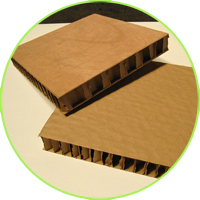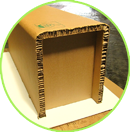Honeycomb Technology
What are its benefits?
The honeycomb structure offers a high strength to weight ratio because of its efficient design. Plain and simply, applications that require a sturdy material with light weight can look to honeycomb as a viable option.
What can it do for the environment?
Since Phil Honeycomb is made from 100% recycled paper, it is a sustainable and environmentally friendly product. Phil Honeycomb does not cut down trees to make honeycomb. Paper, unlike plastic, is also biodegradable, and does not emit any CFCs.
Why is it new in the Philippines?
A stigma that riddles the use of cardboard is that it is not sturdy enough, and therefore not suitable for weight intensive applications. With honeycomb technology, paper is given a very efficient structure that complements its weight advantages, and as a result, consumers are presented with a superior product that they can use and rely on.
What can you do with it?
Paper honeycomb is typically a void-filler. With its low density, it can be put inside hollow objects and spaces to produce a snug fit. It is also used as packaging material because of its excellent compressive strength and isolation properties. Creative applications of honeycomb include making paper furniture and fixtures. With honeycomb, the possibilities are endless!
Who uses it?
A wide range of industries have been taking advantage of honeycomb since the 1930s. All airplanes use aluminum honeycomb to give its wings a rigid structure while still being lightweight. Sandwich panels, which are composed of traditional building materials such as wood, with paper honeycomb in between, are widely used as wall panels in the United States and Europe. Honeycomb can also be seen inside doors, tables, packaging, storage solutions, and other products.










